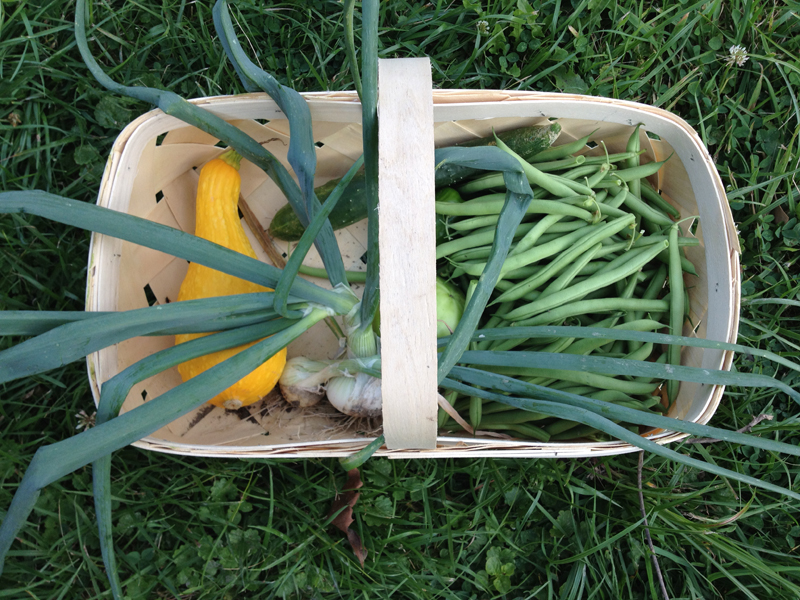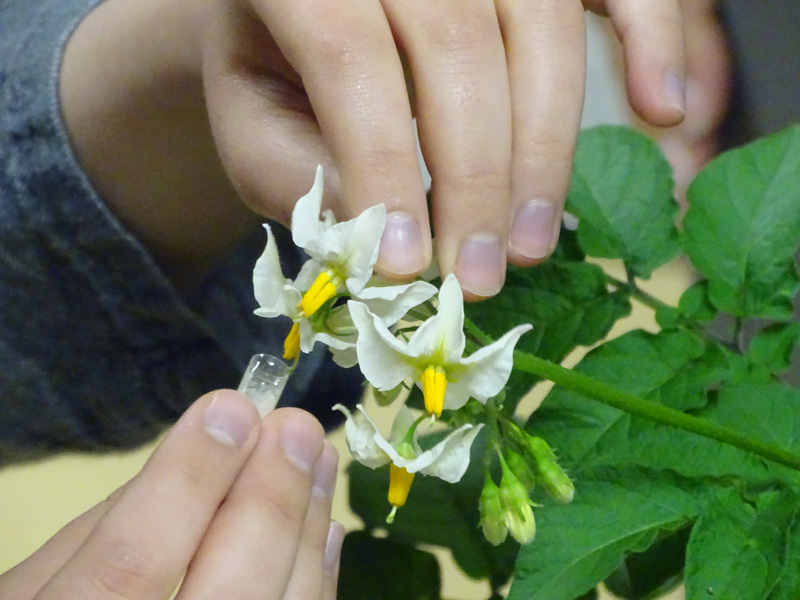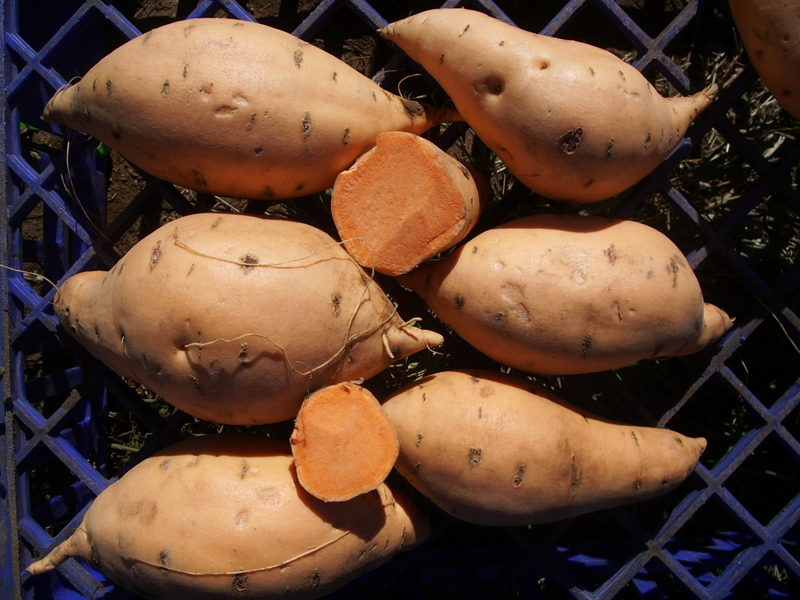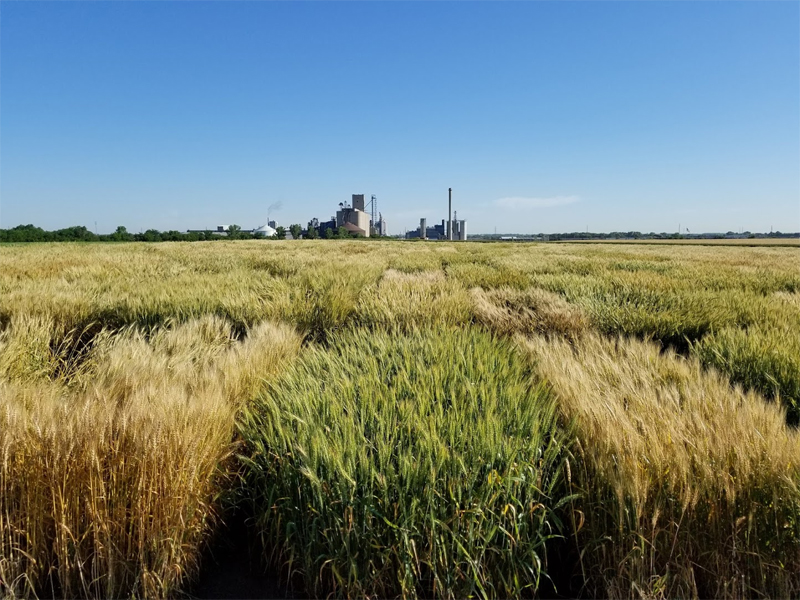
Nutritional quality
What is nutritional quality in crop science?
Plants provide a major part of a nutritious diet. Fruits and vegetables are harvested directly from plants. They are important sources of minerals, vitamins, fiber, and energy. Many common foods like bread, cereals, and pasta are processed from ingredients that come from plants. Even our animal-based foods such as meat, eggs, dairy, and fish depend on plants. Understanding how plants collect, produce, and store health-beneficial nutrients is an important goal of plant scientists.
How does this affect me?
Plant scientists have made tremendous advances understanding what makes plant products nutritious. The roles of vitamins, minerals, and other compounds found in plants are becoming clear. Plant breeders have been improving crop plants for thousands of years, making them more productive, nutritious, and easier to grow and harvest. Recently, plant scientists have found ways to make plants even more nutritious to help those suffering from nutrient deficiencies.
Current challenges
Many people in poor countries lack the vitamins or minerals needed for good health. In addition, the foods they do eat often come from nutrient-deficient soils. If the soils are nutrient-deficient, so are the foods. About two billion people around the world suffer from hidden hunger: getting enough calories, but not enough nutrition. Blindness, cognitive impairments, stunting, and premature death can result.
There are a few ways to solve this malnutrition problem. One is to provide vitamin supplements. Another is to fortify the foods. You may know, for example, that the bread and cereals you buy at the grocery store are fortified. In these examples, food production companies add vitamins and minerals to these products.
Howarth (“Howdy”) Bouis worked with a team of researchers to develop food that actually had more nutrition inside the plant. Howdy hypothesized you could get plants to selectively pick up more nutrients–like zinc–from the soil. Other scientists worried that this would hurt the plant’s yields, but the team discovered that they could increase both zinc content and yield. Zinc is essential for a healthy immune system, growth, wound healing, reproduction, fertility, and sense of taste and smell.
The process of growing foods with increased nutrition is called biofortification. Read more about Howdy and his work here.
Another successful example is orange-fleshed sweet potatoes. White-fleshed sweet potato is an important crop in some African countries. It provides more edible energy per meal than wheat, rice, or cassava. Orange-fleshed sweet potatoes are derived from traditional white sweet potatoes but contain more beta-carotene. The deep orange color is the result. Our bodies convert beta-carotene into vitamin A. Many people in undeveloped or under-developed countries have vitamin A deficiencies. This can lead to blindness and other preventable diseases. Eating biofortified foods like orange-flesh sweet potatoes helps to overcome these deficiencies. The result is a healthier, more productive society. (Read more about them here, or visit our blog about it.)
Improving the nutritional value of plants and seeds might also involve decreasing levels of naturally occurring anti-nutritionals or toxins. A few examples plant scientists have developed include decreased glucosinolates in oilseed rape, decreased unsaturated oils and trypsin inhibitors in soybean, and low phytate levels in cereals. You can also read about an example of potatoes and acrylamide levels here.
Crop physiologists and molecular biologists help breeders develop crop varieties with improved nutritional value and lower levels of undesirable compounds. Together they uncover the genes and the biochemical pathways that contribute to these advances. New technologies such as genome editing will undoubtedly allow development of new types of nutritionally enhanced plants. (Read more on the Crop Breeding page.)
Future opportunities
There is an ever-growing need to develop more nutritionally-enhanced plants and plant products. The population of the earth is predicted to grow by more than two billion people by 2050! Land available for growing crops, however, will be the same–or less. And urban demand for water is ever-increasing. Scientists are looking for ways to enable growers to produce greater levels of nutrients on the same area of land. Nutritionally enhanced plants will play a central role in meeting the global demand for safe, healthy, and plentiful food.
Definitions
Glucosinolates: Organic compounds that contain sulfur and nitrogen derived from glucose and an amino acid. These natural chemicals contribute to plant defense against pests and diseases. It can be toxic if ingested at high levels.
Unsaturated oil: An organic compound composed of carbon and hydrogen (also called fatty acid) in which there is at least one double bond within the chain of carbon-carbon bonds. The fatty acid chain is monounsaturated if it contains one double bond, and polyunsaturated if it contains more than one double bond. Typically, unsaturated oils are liquid at room temperature.
Trypsin inhibitors: A small anti-nutritional peptide that reduces the biological activity of trypsin. Trypsin is a digestive enzyme produced in the pancreas and activated in the intestines. It breaks down proteins ingested by humans and other animals.
Phytate: A concentrated storage form of phosphate in plant tissues, especially seeds. It is not digested readily by ruminant animals (such as cows, sheep, goats) and passes through the digestive system. As such, it lowers the nutritional value of grains fed to animals and fish. Read about an effort to develop low-phytate wheat.





